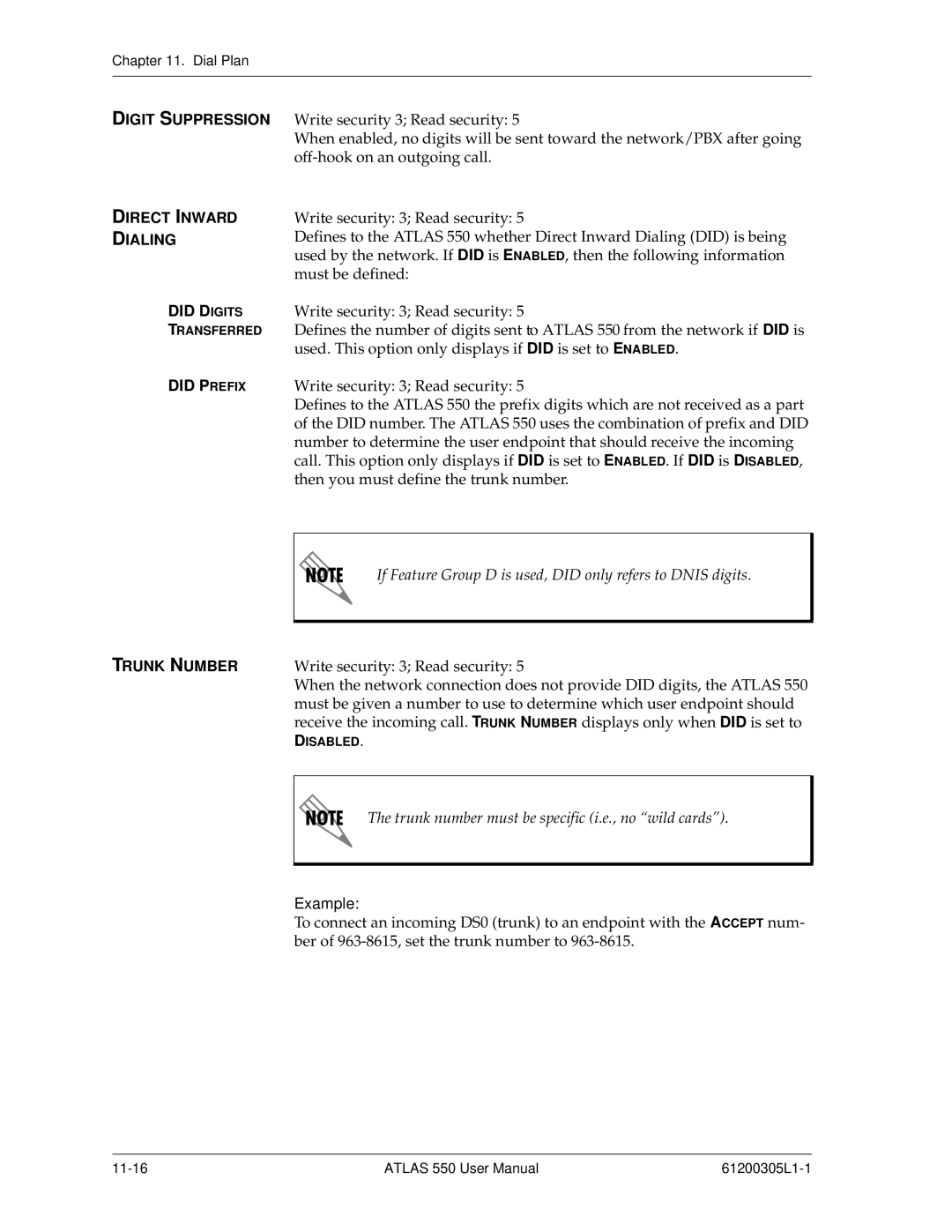
Chapter 11. Dial Plan
DIGIT SUPPRESSION
DIRECT INWARD DIALING
Write security 3; Read security: 5
When enabled, no digits will be sent toward the network/PBX after going
Write security: 3; Read security: 5
Defines to the ATLAS 550 whether Direct Inward Dialing (DID) is being used by the network. If DID is ENABLED, then the following information must be defined:
DID DIGITS Write security: 3; Read security: 5
TRANSFERRED Defines the number of digits sent to ATLAS 550 from the network if DID is
used. This option only displays if DID is set to ENABLED.
DID PREFIX Write security: 3; Read security: 5
Defines to the ATLAS 550 the prefix digits which are not received as a part of the DID number. The ATLAS 550 uses the combination of prefix and DID number to determine the user endpoint that should receive the incoming call. This option only displays if DID is set to ENABLED. If DID is DISABLED, then you must define the trunk number.
If Feature Group D is used, DID only refers to DNIS digits.
TRUNK NUMBER | Write security: 3; Read security: 5 |
| When the network connection does not provide DID digits, the ATLAS 550 |
| must be given a number to use to determine which user endpoint should |
| receive the incoming call. TRUNK NUMBER displays only when DID is set to |
| DISABLED. |
The trunk number must be specific (i.e., no “wild cards”).
Example:
To connect an incoming DS0 (trunk) to an endpoint with the ACCEPT num- ber of
ATLAS 550 User Manual |
